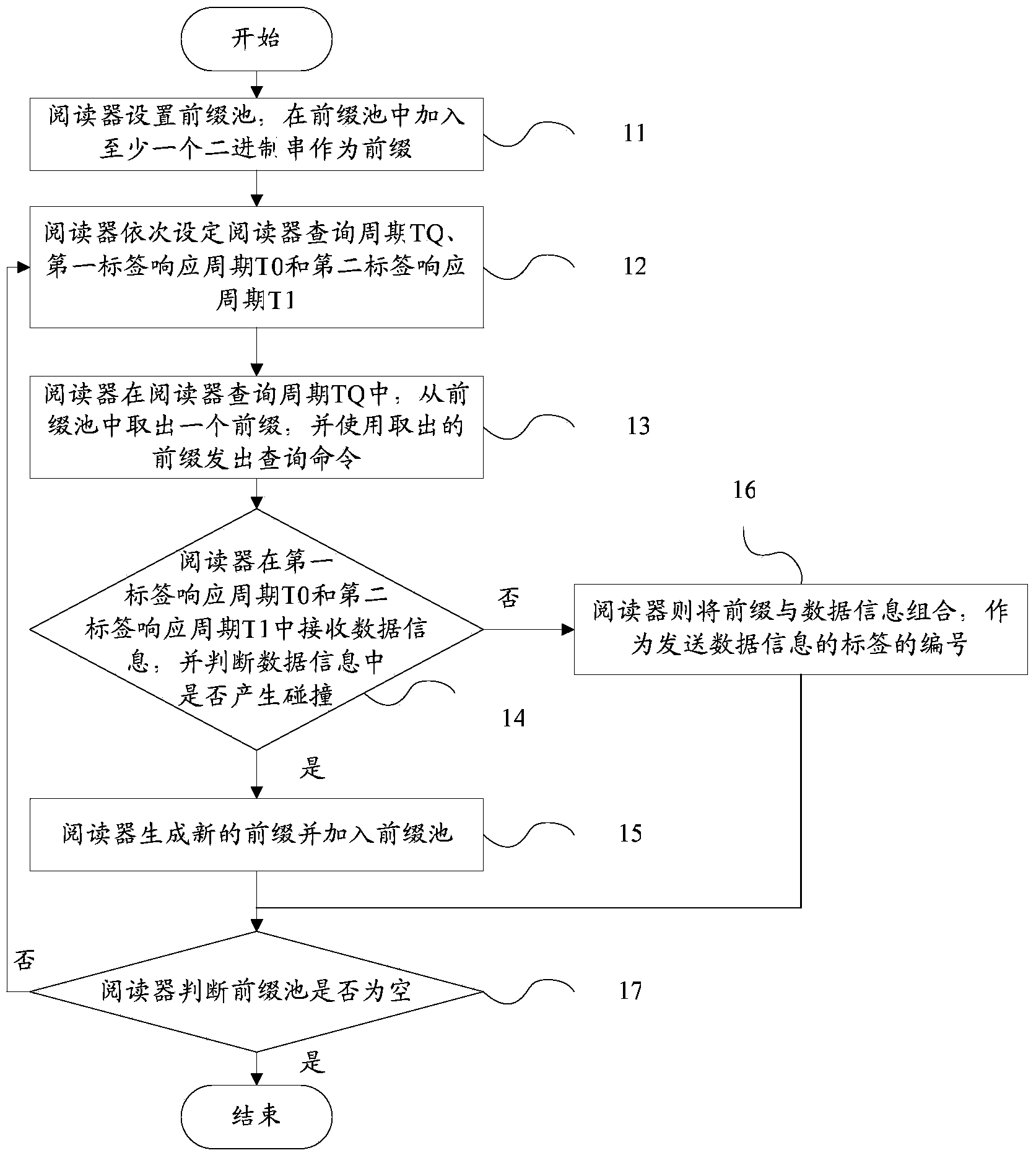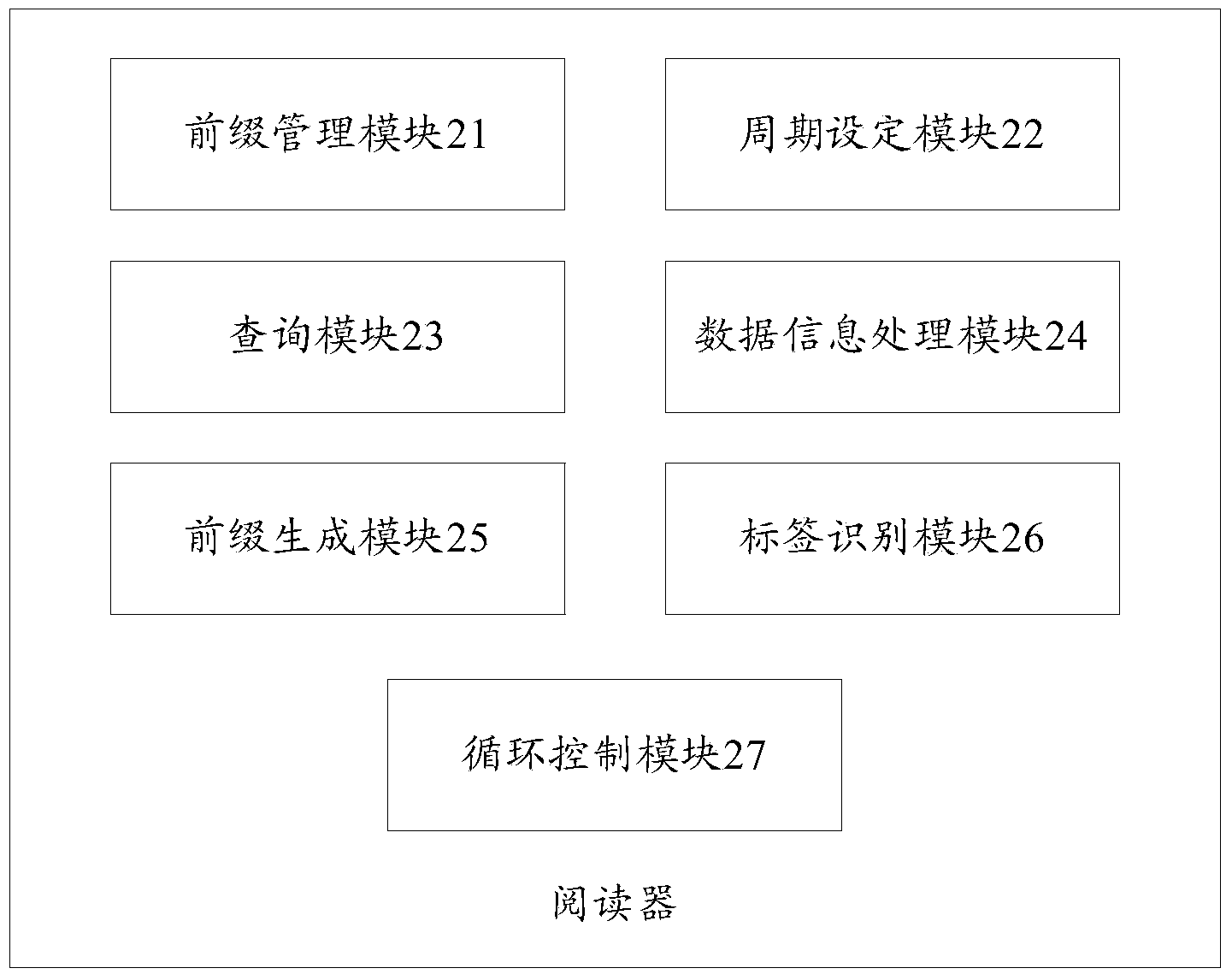RFID multi-tag identification method, reader and tags
An identification method and reader technology, applied in the field of RFID system, can solve the problems of complex algorithm, increase algorithm identification delay, difficulty in algorithm realization, etc., so as to reduce storage space and processing time, improve RFID system performance, and reduce data transmission volume. Effect
- Summary
- Abstract
- Description
- Claims
- Application Information
AI Technical Summary
Problems solved by technology
Method used
Image
Examples
Embodiment Construction
[0044] In order to further explain the technical means and effects of the present invention to achieve the intended purpose of the invention, the specific implementation methods, readers and tags of the RFID multi-tag identification method proposed according to the present invention will be described below in conjunction with the accompanying drawings and preferred embodiments. Structure, characteristic and effect thereof are as follows in detail. In the following description, different "one embodiment" or "an embodiment" do not necessarily refer to the same embodiment. Furthermore, the particular features, structures, or characteristics of one or more embodiments may be combined in any suitable manner.
[0045] Such as figure 1 As shown, an RFID multi-tag identification method according to an embodiment of the present invention is used to identify a plurality of tags by a reader in an RFID system, and a plurality of tags all have binary numbers, including: step 11, the reade...
PUM
 Login to View More
Login to View More Abstract
Description
Claims
Application Information
 Login to View More
Login to View More - R&D
- Intellectual Property
- Life Sciences
- Materials
- Tech Scout
- Unparalleled Data Quality
- Higher Quality Content
- 60% Fewer Hallucinations
Browse by: Latest US Patents, China's latest patents, Technical Efficacy Thesaurus, Application Domain, Technology Topic, Popular Technical Reports.
© 2025 PatSnap. All rights reserved.Legal|Privacy policy|Modern Slavery Act Transparency Statement|Sitemap|About US| Contact US: help@patsnap.com



